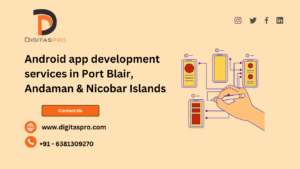Introduction
Sales funnels are an essential tool for businesses looking to turn prospects into loyal customers. Traditionally, building a sales funnel required hefty investment in specialized tools and software. However, with the growing availability of free online tools, even small businesses or entrepreneurs with tight budgets can create an effective sales funnel.
In this blog post, we’ll break down exactly how you can build a sales funnel for free using a variety of tools and strategies. From defining your audience to nurturing leads and converting them into customers, this guide covers everything you need to know.
What is a Sales Funnel?
A sales funnel is a marketing concept that visualizes the journey prospects take from discovering your brand to becoming paying customers. The funnel shape reflects the fact that not everyone who enters at the top (awareness) will make it through to the bottom (action).
A successful sales funnel nurtures leads at every stage, helping them overcome objections, building trust, and ultimately driving conversions.
Why You Need a Sales Funnel
Here’s why having a sales funnel is crucial for your business:
- Automates Lead Generation: A well-structured sales funnel captures leads 24/7, allowing you to grow your audience without constant manual effort.
- Guides Prospects Efficiently: Funnels are designed to nurture prospects through different stages, increasing the likelihood of conversions.
- Increases Conversion Rates: By strategically addressing the needs and concerns of prospects, sales funnels help improve your overall conversion rate.
- Provides Data for Optimization: With tools like Google Analytics or Mailchimp, you can gather data and make informed decisions to improve the funnel over time.
Building this essential tool doesn’t have to break the bank. Many free tools can be just as effective as their paid counterparts.
Sales Funnel Stages Explained
A sales funnel typically consists of four stages: Awareness, Interest, Decision, and Action. Let’s break each one down:
1. Awareness
The top of the funnel is where potential customers first become aware of your brand. This might happen through social media, blog posts, or search engine results. The goal here is to grab their attention and make them interested in learning more.
Tools to use: Free blog platforms (WordPress, Medium), social media (Facebook, Instagram, LinkedIn), SEO-optimized content.
2. Interest
Once people are aware of your brand, the next step is to engage them. You need to give them a reason to stay and interact with your business, such as a valuable piece of content (eBook, guide, webinar).
Tools to use: Canva (to design lead magnets), Google Docs (to create eBooks), free webinars (via Zoom or YouTube Live).
3. Decision
At this point, the prospect is considering making a purchase or taking the desired action. They might be comparing you with competitors or trying to understand how your product solves their problem. This is where offering free trials, testimonials, or case studies can make a difference.
Tools to use: Google Forms (to collect survey/testimonials), free CRM systems like HubSpot (to track leads).
4. Action
The final stage is where the prospect takes action—whether it’s making a purchase, signing up for a subscription, or booking a consultation. You must make this process as seamless and clear as possible.
Tools to use: PayPal or Stripe for free payment processing, free e-commerce platforms like WooCommerce.
Tools to Build a Free Sales Funnel
1. Free Landing Page Builders
A well-designed landing page is key to capturing leads. Here are some free options:
- Google Sites: Simple and effective for creating basic landing pages.
- WordPress: Using free themes and plugins, you can create highly functional landing pages.
- Mailchimp: Offers free landing pages with integration into their email marketing platform.
2. Free Email Marketing Tools
Email marketing is essential for nurturing leads. Some free tools include:
- Mailchimp: Free for up to 500 contacts, offers automation, landing pages, and analytics.
- Sendinblue: Free version allows for 300 emails/day with unlimited contacts.
- MailerLite: Free for up to 1,000 subscribers, includes email automation.
3. Free Analytics Tools
To optimize your funnel, you need data. These free tools will help you track your progress:
- Google Analytics: Offers in-depth tracking of website visitors.
- Mailchimp Analytics: Monitors email performance.
- Ubersuggest: Free tool for keyword research and SEO optimization.
Step-by-Step Guide to Building Your Sales Funnel for Free
Step 1: Define Your Target Audience
The foundation of any successful sales funnel is knowing who you’re targeting. This will influence your messaging, content, and lead generation strategies. Start by defining your audience’s demographics, interests, and pain points.
Free Tools:
- Google Analytics: Understand the behaviors and interests of visitors to your site.
- Facebook Audience Insights: Offers demographic data on your Facebook page followers.
Step 2: Craft a Lead Magnet
A lead magnet is an incentive offered to prospects in exchange for their contact information. Popular options include free eBooks, webinars, templates, or discount codes.
Free Tools:
- Canva: Create visually appealing eBooks, checklists, or infographics.
- Google Forms: Set up a form to collect email addresses in exchange for your lead magnet.
Step 3: Create a Free Landing Page
Your landing page is the central hub where visitors will exchange their contact details for your lead magnet. It must be optimized for conversion with a compelling headline, clear copy, and a strong call-to-action (CTA).
Free Tools:
- Google Sites: Create a free, simple landing page.
- Mailchimp: Offers landing pages that connect directly with email automation.
- WordPress: With free plugins like Elementor, you can build stunning landing pages.
Tips for an Effective Landing Page:
- Use a clear, benefit-driven headline.
- Highlight the value of your lead magnet with bullet points.
- Keep the form simple—ask only for essential information.
Step 4: Design an Email Marketing Sequence
After someone provides their email, you’ll want to nurture them through an email sequence. Your emails should continue providing value, build trust, and eventually introduce your product or service.
Free Tools:
- Mailchimp: Automates welcome sequences, drip campaigns, and personalized email marketing.
- MailerLite: Offers a free version with advanced email automation capabilities.
Suggested Email Sequence:
- Welcome Email: Deliver the lead magnet and thank them for signing up.
- Follow-Up Email: Offer additional resources (blog posts, videos, etc.).
- Sales Email: Present your product or service with testimonials and case studies.
- Reminder Email: Use urgency, such as limited-time offers, to drive conversions.
Step 5: Drive Traffic to Your Funnel
Now that your funnel is set up, the next step is driving traffic to it. Here are some free methods:
- SEO: Optimize blog posts, landing pages, and product descriptions for search engines.
- Free Tool: Ubersuggest for keyword research and optimization tips.
- Social Media Marketing: Share your landing page on Facebook, LinkedIn, Instagram, and Twitter.
- Free Tool: Buffer to schedule and automate social media posts.
- Guest Blogging: Write guest posts for industry-relevant blogs with a CTA linking to your funnel.
Step 6: Monitor and Optimize Your Funnel
After launching your funnel, it’s important to track performance and make necessary adjustments. Monitor metrics like conversion rates, open rates, and traffic sources.
Free Tools:
- Google Analytics: Tracks website visitors, bounce rates, and referral sources.
- Mailchimp: Provides detailed email analytics, including open and click-through rates.
Optimization Tips:
- Test different landing page headlines and CTAs.
- Experiment with email subject lines and content.
- Analyze where drop-offs occur in your funnel and tweak those areas.
Advanced Strategies for Maximizing Your Free Funnel
Once your funnel is live and generating traffic, you can implement these advanced tactics to get even more value:
- Retargeting with Free Ad Credits: Use Facebook or Google free ad credits to retarget visitors who didn’t convert.
- Create Additional Lead Magnets: Offer a variety of lead magnets to capture different segments of your audience.
- Offer Upsells: Include a free upsell or limited-time offer in your email sequence to increase average order value.
Common Mistakes to Avoid When Creating a Free Sales Funnel
- Lack of Clear Audience Definition: Failing to define your target audience can result in lower conversions.
- Overcomplicating the Funnel: Simplicity is key. A free funnel doesn’t need unnecessary complexity.
- Skipping the Optimization Stage: Continuously monitor and tweak your funnel for better performance.
Conclusion
Creating a sales funnel for free is entirely possible with the right tools and strategies. While it requires time and effort, a well-executed funnel can deliver consistent leads and sales for your business.
By following this step-by-step guide, you’ll be able to set up a cost-effective sales funnel using free tools like Google Sites, Mailchimp, and Canva. Start small, optimize as you go, and watch your conversions grow.
FAQs
1. Can I really create an effective sales funnel for free? Yes, many free tools are available that offer all the functionalities needed to build a working sales funnel. You may eventually want to upgrade to paid versions, but starting for free is entirely possible.
2. How do I drive traffic to my funnel without paid ads? You can use organic traffic methods like SEO, social media, and guest blogging. Additionally, joining forums and communities relevant to your niche can help drive traffic.
3. What kind of lead magnet works best? The best lead magnets solve a specific problem for your audience. eBooks, webinars, templates, or free courses tend to work well, depending on your industry.
4. How do I optimize my sales funnel over time? Use analytics tools like Google Analytics and Mailchimp to track performance, and constantly test different elements like headlines, email content, and CTAs to improve conversion rates.


